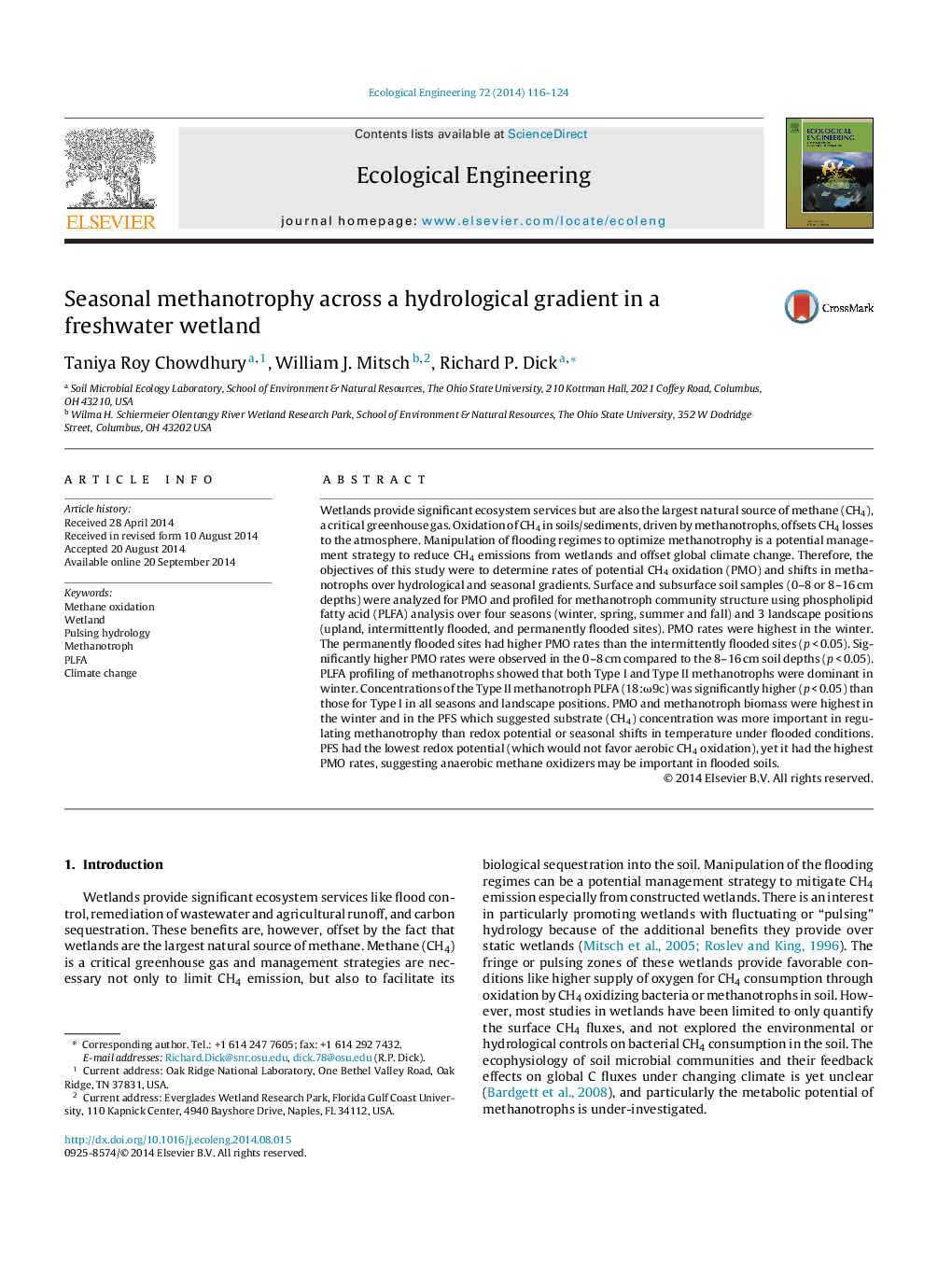| Article ID | Journal | Published Year | Pages | File Type |
|---|---|---|---|---|
| 4389365 | Ecological Engineering | 2014 | 9 Pages |
Wetlands provide significant ecosystem services but are also the largest natural source of methane (CH4), a critical greenhouse gas. Oxidation of CH4 in soils/sediments, driven by methanotrophs, offsets CH4 losses to the atmosphere. Manipulation of flooding regimes to optimize methanotrophy is a potential management strategy to reduce CH4 emissions from wetlands and offset global climate change. Therefore, the objectives of this study were to determine rates of potential CH4 oxidation (PMO) and shifts in methanotrophs over hydrological and seasonal gradients. Surface and subsurface soil samples (0–8 or 8–16 cm depths) were analyzed for PMO and profiled for methanotroph community structure using phospholipid fatty acid (PLFA) analysis over four seasons (winter, spring, summer and fall) and 3 landscape positions (upland, intermittently flooded, and permanently flooded sites). PMO rates were highest in the winter. The permanently flooded sites had higher PMO rates than the intermittently flooded sites (p < 0.05). Significantly higher PMO rates were observed in the 0–8 cm compared to the 8–16 cm soil depths (p < 0.05). PLFA profiling of methanotrophs showed that both Type I and Type II methanotrophs were dominant in winter. Concentrations of the Type II methanotroph PLFA (18:ω9c) was significantly higher (p < 0.05) than those for Type I in all seasons and landscape positions. PMO and methanotroph biomass were highest in the winter and in the PFS which suggested substrate (CH4) concentration was more important in regulating methanotrophy than redox potential or seasonal shifts in temperature under flooded conditions. PFS had the lowest redox potential (which would not favor aerobic CH4 oxidation), yet it had the highest PMO rates, suggesting anaerobic methane oxidizers may be important in flooded soils.
